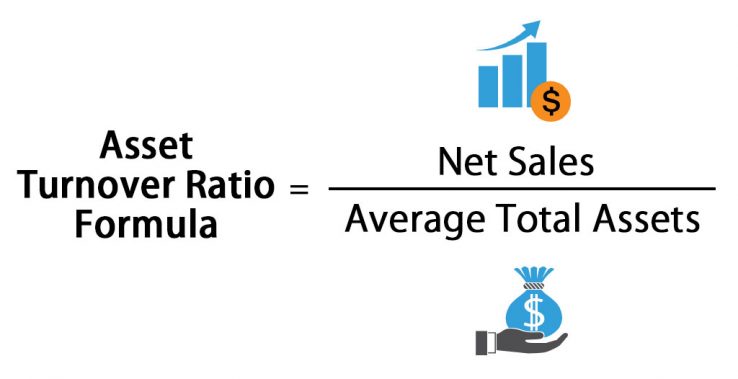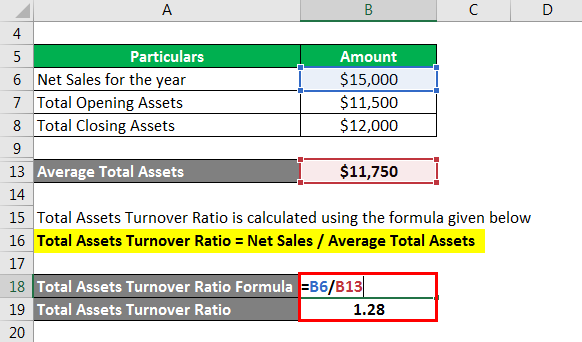

#TOTAL ASSET TURNOVER RATIO FORMULA HOW TO#
In the article, we will tell you how to correctly calculate the asset turnover ratio, explain what the values mean, calculate the indicator using a specific example.Īsset turnover ratio is an indicator of business activity, which reflects the number of complete product circulation cycles for the period under review. If it is significantly lower than the asset turnovers of your competitors, this indicates that there is potential for optimisation in your company and that your assets are not yet being used efficiently enough.To improve the efficiency of using the company’s own funds, timely analysis of performance indicators, including the calculation of asset turnover, is required. Then you can assess how your asset turnover compares to the competition. To assess whether your company's asset turnover is high or low, you should only ever compare yourself with companies from the same industry. In general, the higher the asset turnover, the better. What is a good asset turnover?Īsset turnover varies greatly from sector to sector, so it is not possible to derive a general value. On the other hand, a value of less than 1 indicates that the assets are being used inefficiently, as in this case the asset value is higher than the income generated. The company therefore uses its assets very efficiently to generate income.Īs we can see from the example above, asset turnover ratio with a value greater than 1 stands for high efficiency, because the value of the revenue is higher than the value of the assets used. This means that the value of the assets used is lower than the income generated from them, which speaks for high efficiency. The asset turnover in the example above is therefore about 1.5. The formula can then be set up in exactly the same way as that for total asset turnover:įixed asset turnover = Total annual sales / ((Fixed assets at start of year + Fixed assets at end of year) / 2)Ī company shows the following items on its balance sheet and income statement: Fixed assets include all non- current assets and tangible long-term assets, for example: In this case, only the fixed assets are compared to the total sales. In addition to total asset turnover, fixed asset turnover can also be calculated. This is then compared to the total annual sales or revenue, which can be found on the income statement. They include both tangible and intangible assets and current assets.īy adding the two asset values and then dividing by 2, you get the average value of the assets over the course of the year. The assets at the beginning and end of the year are shown on the balance sheet. This formula therefore shows how high the asset turnover is in a business year. Total asset turnover = Total annual sales / ((Total assets at start of year + Total assets at end of year) / 2) To calculate the asset turnover, there is a simple formula in which the total sales revenue is compared to the assets employed: How do you calculate asset turnover? Total asset turnover formula what remains after deducting the costs from the income. The return on assets indicates how high the profit is that is achieved from the invested assets, i.e. return on assetsĪsset turnover should not be confused with return on assets. If asset turnover is low, on the other hand, this indicates that efficiency is less good.

The higher the asset turnover, the better a company uses its assets to generate revenue. This ratio shows the efficiency with which a company uses its assets to generate income.

It is also referred to as the asset turnover ratio. What is asset turnover?Īsset turnover measures the value of a company's revenues in relation to the value of its assets. Here we show you what asset turnover actually means, how it is calculated and what it indicates. Asset turnover is a key figure for evaluating the efficiency with which a company uses its assets to generate income.


 0 kommentar(er)
0 kommentar(er)
